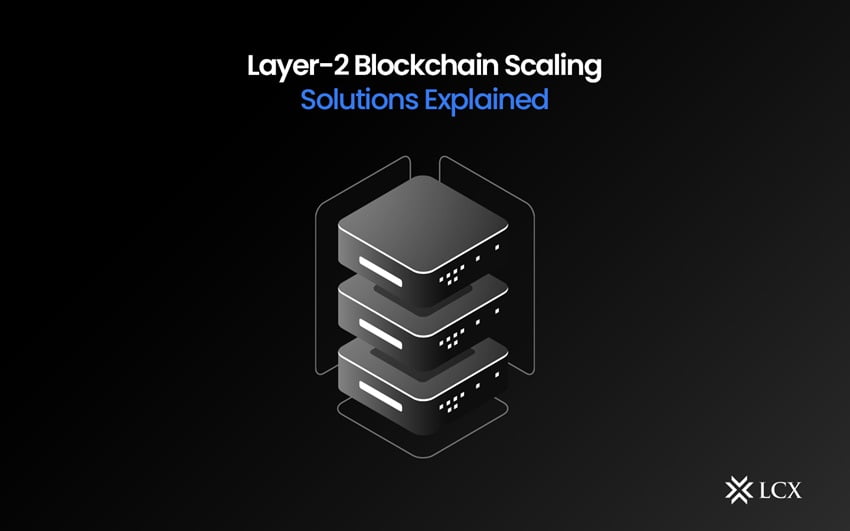Introduction
Blockchain technology has revolutionized various industries with its decentralized nature, but it faces significant challenges, particularly in terms of scalability and transaction costs. Enter Layer 2 solutions—innovative technologies designed to address these issues by building on top of existing blockchain networks. These solutions are pivotal in enhancing the efficiency and affordability of blockchain transactions, paving the way for broader adoption and utilization.
What Are Layer 2 Solutions?
Layer 2 solutions are protocols that operate on top of a base blockchain layer (Layer 1) to improve its scalability and efficiency. Unlike Layer 1, which involves changes to the base blockchain itself (like increasing block size or altering consensus mechanisms), Layer 2 solutions work externally to handle transactions more effectively.
Differences Between Layer 1 and Layer 2
Layer 1 solutions focus on modifying the base protocol to enhance scalability directly, such as through consensus algorithm improvements or block size increases. In contrast, Layer 2 solutions add an additional layer where transactions can be processed more rapidly and at a lower cost, then settled back on the main chain, thereby reducing the load on Layer 1.
Why Do We Need Layer 2 Solutions?
Blockchain networks like Bitcoin and Ethereum have encountered severe scalability problems, leading to high transaction fees and slower processing times during peak usage. Layer 2 solutions address these challenges by providing alternative pathways for transactions, ensuring the network remains efficient even as demand grows.
Types of Layer 2 Solutions
State Channels
State channels enable participants to transact off-chain, significantly reducing the need for on-chain transactions. By locking up a portion of the blockchain in a multi-signature address, users can exchange numerous transactions off-chain before settling the final state back on the blockchain.
Sidechains
Sidechains are independent blockchains running in parallel to the main chain (Layer 1), allowing assets to be transferred between the two. This method alleviates congestion on the main chain by offloading transactions to the sidechain.
Plasma
Plasma involves creating smaller chains (child chains) that run alongside the main chain to handle bulk transactions, which are then periodically settled on the main chain. This approach enhances scalability by distributing the transaction load.
Rollups
Rollups bundle multiple transactions into a single transaction on Layer 1, reducing the data that needs to be processed and stored on the main chain. They come in two types: optimistic rollups and zk-rollups, each with unique benefits and mechanisms.
Nested Blockchains
Nested blockchains involve a main chain that sets the rules, while multiple secondary chains follow these rules to execute transactions. These secondary chains handle most of the transaction processing, lightening the load on the main chain.
State Channels
State channels work by opening a channel between two parties for off-chain transactions. The final transaction state is recorded on the blockchain only when the channel is closed, leading to faster and cheaper transactions. This method is particularly useful in gaming and micropayments.
Sidechains
Sidechains offer a way to move assets between different blockchains securely. By doing so, they reduce the burden on the main chain and provide a testing ground for new features without risking the security of the primary network. Sidechains are often used for enterprise solutions and applications requiring high throughput.
Plasma
Plasma chains operate as smaller, secondary chains anchored to the main blockchain. They handle high volumes of transactions independently and periodically commit the results back to the main chain. This method is ideal for applications needing large-scale processing, such as decentralized exchanges.
Rollups
Rollups aggregate multiple transactions and roll them into a single, compressed transaction on the main blockchain. This significantly cuts down the amount of data processed and stored on Layer 1. Rollups are beneficial for financial applications and decentralized finance (DeFi) projects.
Nested Blockchains
Nested blockchains create a hierarchy where secondary chains operate under the main chain’s protocol, processing transactions independently and reporting back to the main chain. This system can manage complex operations and high transaction volumes, suitable for large-scale enterprise applications.
Comparing Different Layer 2 Solutions
Each Layer 2 solution has its strengths and weaknesses. State channels are fast and cost-effective for two-party transactions but are less suited for complex, multi-party interactions. Sidechains provide robust solutions for specific use cases but require additional security measures. Plasma chains offer scalability but can be complex to implement. Rollups are efficient but come with their own set of trade-offs in terms of complexity and security. Nested blockchains offer extensive scalability but can be challenging to integrate with existing systems.
How Layer 2 Solutions Improve Blockchain Performance
Layer 2 solutions dramatically enhance blockchain performance by increasing transaction speeds and reducing costs. They offload much of the transactional workload from the main chain, allowing it to process transactions more efficiently. This improved performance leads to a better user experience, encouraging broader adoption of blockchain technology.
Challenges and Limitations of Layer 2 Solutions
Despite their advantages, Layer 2 solutions face challenges such as security concerns, complexity in implementation, and interoperability issues. Ensuring the security of off-chain transactions is paramount, and the complexity of these solutions can hinder widespread adoption. Additionally, achieving seamless interoperability between Layer 2 and Layer 1 solutions remains a significant hurdle.
Future of Layer 2 Solutions
The future of Layer 2 solutions is promising, with ongoing innovations aimed at improving scalability, security, and user experience. As these technologies evolve, they are expected to play a critical role in the broader adoption of blockchain, enabling new use cases and applications that were previously not feasible.
Case Studies
Several projects have successfully implemented Layer 2 solutions. For instance, the Lightning Network for Bitcoin has demonstrated significant improvements in transaction speed and cost. Similarly, Ethereum’s rollup solutions have shown great potential in enhancing DeFi applications, providing valuable insights and lessons for future implementations.
Conclusion
Layer 2 solutions are essential for overcoming the scalability and cost challenges faced by blockchain networks. By providing efficient and cost-effective alternatives for transaction processing, they are crucial in driving the future growth and adoption of blockchain technology. As these solutions continue to mature, they will unlock new possibilities and transform how we interact with blockchain networks.
FAQs
- What are the main benefits of Layer 2 solutions? Layer 2 solutions enhance scalability, reduce transaction costs, and improve transaction speeds, making blockchain networks more efficient and user-friendly.
- How do Layer 2 solutions affect transaction fees? By offloading transactions from the main chain, Layer 2 solutions significantly reduce the demand on Layer 1, leading to lower transaction fees.
- Are Layer 2 solutions secure? While Layer 2 solutions offer improved performance, their security depends on proper implementation and integration with Layer 1. Ensuring robust security measures is crucial.
- What is the future of Layer 2 solutions in blockchain? The future looks bright, with continuous advancements aiming to enhance scalability, security, and interoperability, driving broader blockchain adoption.
- How do Layer 2 solutions enhance user experience? By increasing transaction speed and reducing costs, Layer 2 solutions provide a smoother and more cost-effective user experience, encouraging more users to engage with blockchain applications.



